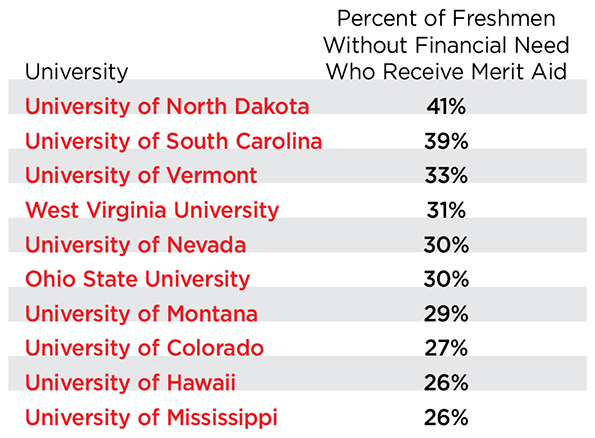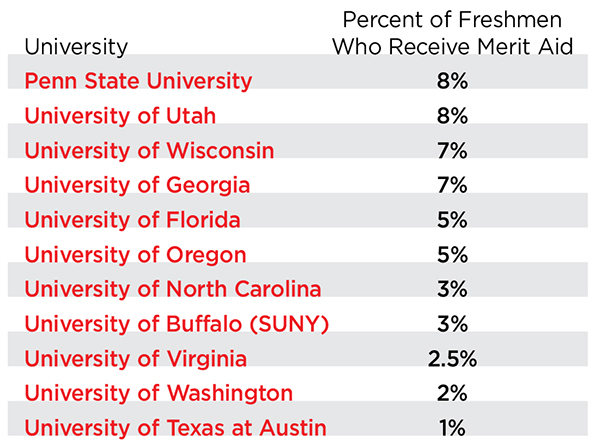Smart, upper-income students are in demand at many major research universities, as well as lesser-known public colleges. And the amount of merit scholarships that universities are using to entice these highly desirable students has been on the rise.
Back in 1996, for instance, the percentage of institutional dollars devoted to the students in the lowest income quartile (34 percent) was much greater than the percentage devoted to students in the highest quartile (16 percent). But in 2012, the percentage of aid devoted to the poorest students (25 percent) and their richest classmates (23 percent) was nearly the same, according to a recent report by the New America Foundation.
The Pursuit of Affluent Students
One reason schools are going after affluent students more aggressively is because state universities can charge nonresidents more money. This extra revenue is sorely needed because state governments are still not supporting their public universities at the same levels they did before the 2008-2009 recession. State universities can charge outsiders two to three times what residents pay.
For the 2014-2015 school year, for instance, the University of California, Berkeley, charged residents $12,972 for tuition, but required nonresidents to pony up $35,850, according to the College Board. In the coming year, residents will pay $14,468 to attend the University of Virginia, but outsiders will pay $43,082.
State colleges and universities, just like their private peers, are focused on inching up in U.S. News & World Report’s college rankings. Affluent students tend to have higher standardized test scores and grade point averages, which the rankings take into account.
Standardized test scores are highly correlated with income, according to the College Board and the ACT. So students whose parents make yearly incomes of $200,000, for instance, will fare better on the SAT and ACT, on average, than those from households making $150,000 and so on down the income ladder.
The pursuit of affluent outsiders has become even more frenetic, in part, because schools don’t want their competitors to poach students from their territories. The New America Foundation report highlighted this phenomenon. For instance, the University of Missouri, my alma mater, felt it needed to beef up its merit aid because admission representatives from the Universities of Alabama, Arkansas, Kentucky, Mississippi and Minnesota were aggressively recruiting in the state. Now the University of Missouri, along with Indiana University and the University of Iowa, are recruiting heavily next door and luring prospective students away from the University of Illinois Urbana-Champaign.
“The level of competition is creating a prisoner's dilemma," says Donald Hossler, a professor and higher-education expert at Indiana University, in the New America Foundation report. "Some schools are doing this not because they want to but because their peers are. They feel they can't afford not to do it."
The Most Aggressive
The universities that have been most aggressive in recruiting affluent students tend to be located in the South, parts of the Midwest and the interior West. Some western universities are also recruiting because of the dwindling number of teenagers in their states.
Here are the flagship universities, according to the report, that are giving merit aid to the highest percentage of students who have no financial need:

It’s also important for your clients to know what schools are stingiest with merit aid. At the very bottom of the list is the University of Texas at Austin, which only provides 1 percent of freshmen with merit awards. The rest is designated for need-based financial aid.
Here are the flagships that provide the lowest percentage of merit scholarships:

The states of Georgia and Florida provide a large percentage of in-state students with merit aid rather than through the universities.
While the race to enroll affluent students can be a huge plus to your clients, not all students are benefiting from the merit aid. At universities with aggressive merit-aid policies, recipients of Pell Grants (federal aid awarded to low and middle-income students) represent 32 percent of the student body. At universities where the merit aid isn’t so plentiful, Pell Grant students represent 42 percent of the student bodies.
“By bringing in more and more wealthy nonresident students,” the report concluded, “these colleges are increasingly becoming bastions of privilege.”






